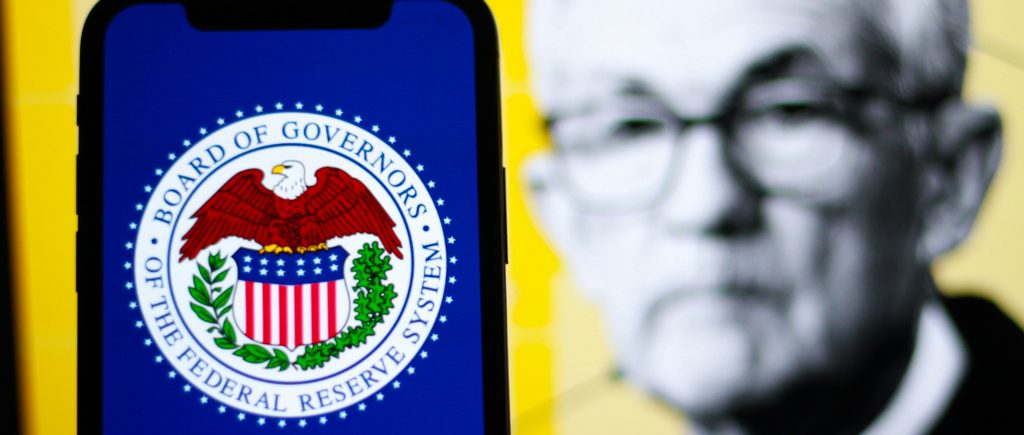In addition to raising concerns about how much pressure might be put on the Federal Reserve during his second term in office, some economists and experts say Donald Trump’s victory in Tuesday’s presidential contest could potentially upend the US economy and change the Fed’s policy calculus in the coming months.
During his campaign, Trump pledged to prolong his 2017 tax cuts, deport millions of undocumented immigrants, and use tariffs more forcefully against US trading partners. In many estimates, those policies may increase the government deficit, wages, and prices if they were implemented.
That would make it more difficult for the Fed to protect the labor market while attempting to bring inflation down to its target of 2%. Trump has a history of publicly criticizing Fed Chair Jerome Powell, which could put the central bank under an awkward political spotlight during that delicate assignment.
On Wednesday, Fed officials will start a two-day policy meeting. Following a half-point decrease in September, they are anticipated to reduce their benchmark interest rate by a quarter percentage point on Thursday. According to the median estimate published in September, they have forecast a further quarter-point decrease this year, in December, and another full point of reductions in 2025.
However, when they evaluate how Trump’s economic ideas will be implemented, policymakers may now take a more cautious approach to the question of when and how much to cut. On the margin, they might believe that lower immigration or tariffs could increase our risk of inflation over the coming years. By cutting a little bit more slowly, it allows us a little bit more time to watch what’s actually happening with inflation expectations and the labour market, may be their mentality.
Jerome Powell will almost probably be asked about the impact of the election on the Fed’s outlook during his news conference, which he will hold at 2:30 p.m. Thursday after the Federal Open Market Committee meeting this week.
Trump was regularly irritated by the Fed chair during his first time in office. Trump has persisted in his criticism, claiming as recently as August that Powell had made policy decisions that were “a little bit too early and little bit too late.”
Having a stance
Additionally, Trump has stated that he thinks presidents should have “say” in the Fed’s interest-rate policy and implied that the Fed’s September rate cut of a half percentage point was motivated by politics.
However, the entirety of his statements has fueled rumors that he may try to limit the Fed’s independence and terminate the long-standing custom of letting the central bank set monetary policy apart from the executive branch. According to legal experts, Trump considered firing Powell during his first term, which would have been an unusual and dubious legal move.
The Fed may be shielded against presidential meddling by the safeguards that surround it. The Senate must confirm a president’s nominees to the Fed’s Board of Governors, and congressional committees, for instance, continue to supervise the central bank. Powell and other officials have frequently reassured the public that they do not consider political factors when determining monetary policy and that they want to avoid getting involved in partisan politics.
Sowing Doubt
However, there is undoubtedly that institutional independence, and a president’s outspoken and public criticism of the Fed can raise questions,” Binder stated. However, if people start to question whether it will perform as promised, “no amount of structural insulation can protect it.” A few of Trump’s advisors have dismissed worries that he may try to influence the Fed.
The decision-making room is not where Trump wants to be. All he wants is for his voice to be heard. He is aware that long-term inflation expectations are anchored by central bank independence, which in turn anchors long-term rates.
The future government is expected to select a neutral Fed Chair and take seriously any suspicions of cooperation between the Fed and the executive branch. Appointing important individuals in the upcoming years will be Trump’s most direct means of influencing the Fed. Powell’s tenure as chair ends in May 2026, and Trump has previously stated that Powell would not be reappointed. Powell’s appointment as governor becomes available in January 2028, whereas Fed Governor Adriana Kugler’s term ends in January 2026. For each of those posts, Trump will have the chance to select candidates.
Kevin Hassett may be Trump’s eventual Fed Chair, according to several people close to the campaign. Additionally, the president-elect will have the authority to designate a vice chair for supervision, a significant regulatory position that manages the biggest banks in the country. Michael Barr, whose tenure expires in July 2026, was appointed to the position by President Joe Biden. Barr’s initial plan to increase the amount of capital banks must keep has sparked harsh criticism from Republicans and the banking industry. The strategy is currently being revised by the Fed and other agencies.
Shortly following the election of a president from the opposing party, recent occupants of Barr’s job resigned. Even if his influence over monetary policy is less immediate, the new president might swiftly affect regulatory policy if Barr follows this precedent following Trump’s victory.

 Noor Trends News, Technical Analysis, Educational Tools and Recommendations
Noor Trends News, Technical Analysis, Educational Tools and Recommendations




